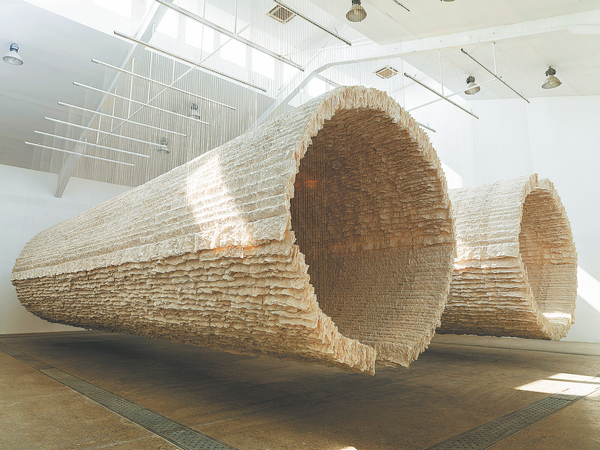

The age-old craft continues to be faithfully practiced by a dedicated group of craftspeople in Jingxian county, Xuancheng, Anhui province. The enduring tradition has not only made the county one of the country's leading hubs for handmade paper, it has also breathed new life into its culture and tourism sectors.
Nestled at the base of emerald hills in Jingxian is a striking white structure, its main body built from steel to resemble a stack of gracefully arranged paper.
This is the Xuan Paper Museum. It is dedicated to the history and craft of Xuan paper production and also hosts exhibitions of masterpieces of traditional calligraphy and painting.
The museum, which opened to the public in 2016, is part of the Xuan Paper Cultural Park, where people can visit workshops to experience the traditional way Xuan paper is made. During the recent summer vacation, many primary and middle school students went to visit.
One of them was Hu Yuguo, a primary school pupil from Ma'anshan, Anhui province, who followed the papermaking masters as they dipped a bamboo screen in a pool of pulp, and then got hands-on experience by lifting a sheet of paper from the pool.
The sheet was then sent to be sun-dried and cut before being packed in an elegant box, which Hu took home as a memento. "It's truly magical to watch the tough bark of the sandalwood tree and rice straw undergo various processes to ultimately become Xuan paper. I'm going to keep the paper I made safely," says Hu.
Yao Yunkui works in one of the workshops, where he plays a crucial role in the process of drying.
The 32-year-old takes the wet paper sheets, which are lifted from the pulp pool, and carefully places them on a drying wall — a vital heating apparatus used during the sunning phase of production.
He then uses a brush to smooth out the paper's surface. During this process, the paper sheets adhere to the wall and dry gradually to become finished Xuan paper.